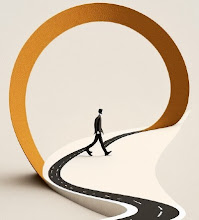Dan is a Co-Founder of Tenfold and currently serves as the Chief Strategy Officer. Dan oversees the Tenfold sales organization, manages strategic partner relationships and works with key enterprise accounts to ensure their success with the Tenfold platform.
I have written a number of articles about the B2B sales process, but it's nice to hear from people who have experience in B2C, which is a completely different sales cycle.
The original article is available on the Tenfold website:
https://www.tenfold.com/sales-leadership/b2c-sales-process/
Getting the B2C Sales Process Right
The business-to-customer or B2C sales cycle has always been viewed by industry experts as something of a mystery. In fact, a search on Amazon.com or a stroll through the local bookstore will reveal volumes of material written about the process that consumers undergo before making a purchase.
There seem to be two main schools of thought on the subject. While some advocates believe consumer purchases are driven by a specific need, others argue that sales are driven by psychology.
Understanding the fundamentals of these two theories can help businesses reap the rewards that come with B2C sales. Let’s start with need-driven sales.
Needs-Based B2C Retail Sales
All consumers have needs, and all businesses cater to needs—whether it’s B2B or B2C. The needs-based sales cycle suggests that B2C retail sales begin with an issue the consumer needs to have addressed and then identifies a product that satisfies that need. From there, the five stages of the buyer decision process suggest that the consumer will research the product to make sure it will deliver. This stage involves reading reviews and gathering ‘social proof’ that purchasing that specific product is a ‘smart’ move. Once the consumer has gained confidence in the product, alternatives may be evaluated as reassurance that there isn’t a better alternative. In the fourth stage—once the evaluation process has been completed—the purchase decision is made. The final stage is known as ‘post-purchase behavior’, which includes possible regret or entertaining thoughts that an alternative might have been the better option.
Under this model, selling to consumers involves:
1) Positioning a product so that consumers can easily locate it when a need arises (e.g. windshield wipers at a service station, coffee house in an office building);
2) Feeding appropriate information to help with making a favorable purchase decision, and
3) Vigorous customer support to address post-purchase doubts.
Phychology-Based B2C Sales Cycle
The other popular view relies on human nature as the reason consumers make any purchases at all. While psychology plays a role in the needs-based B2C sales process (validation and post-purchase stages), the fundamental belief is that three key emotions drive all purchase decisions.
Those emotions are:
- Ego – consumers make purchases to feel better about themselves, a long-held belief by lifestyle-product advertisers and marketers. Businesses selling on ego will appeal to a consumer’s sense of self, applauding the purchase decision as a smart and/or popular one;
- Fear – consumers make purchases to alleviate a real or, more often, perceived fear. Businesses selling on fear will appeal to a consumer’s doubts and uncertainties and highlight how their product will keep them safe and/or eliminate the fear altogether, and
- Greed – consumers make purchases for selfish reasons that will advance their own interests. Businesses selling on greed will demonstrate how their product delivers more than other products the consumer’s neighbors, family, friends, and colleagues may have purchased.
It’s important to understand that businesses cannot appeal to all three of these emotions at the same time. This underscores the importance of understanding the product being sold, and which emotion it homes in on.
Caveat About Selling to Individual Consumers
Well-respected and bestselling books like Why We Buy and Decisive: How to Make Better Choices in Life and Work demonstrate that no single theory can adequately dissect the B2C sales process. For businesses wanting to achieve success in the B2C arena, it’s vital to understand their product offering as well as their differentiating factor. In particular, what emotion does their product appeal to the most? How do the business and its products differentiate themselves from competitors?
Once the business understands both itself and its product line, it’s important to align the brand with the most effective stages of the purchase decision cycle while reinforcing the emotion-based rationale for making the right purchasing decision.












0 comments:
Post a Comment